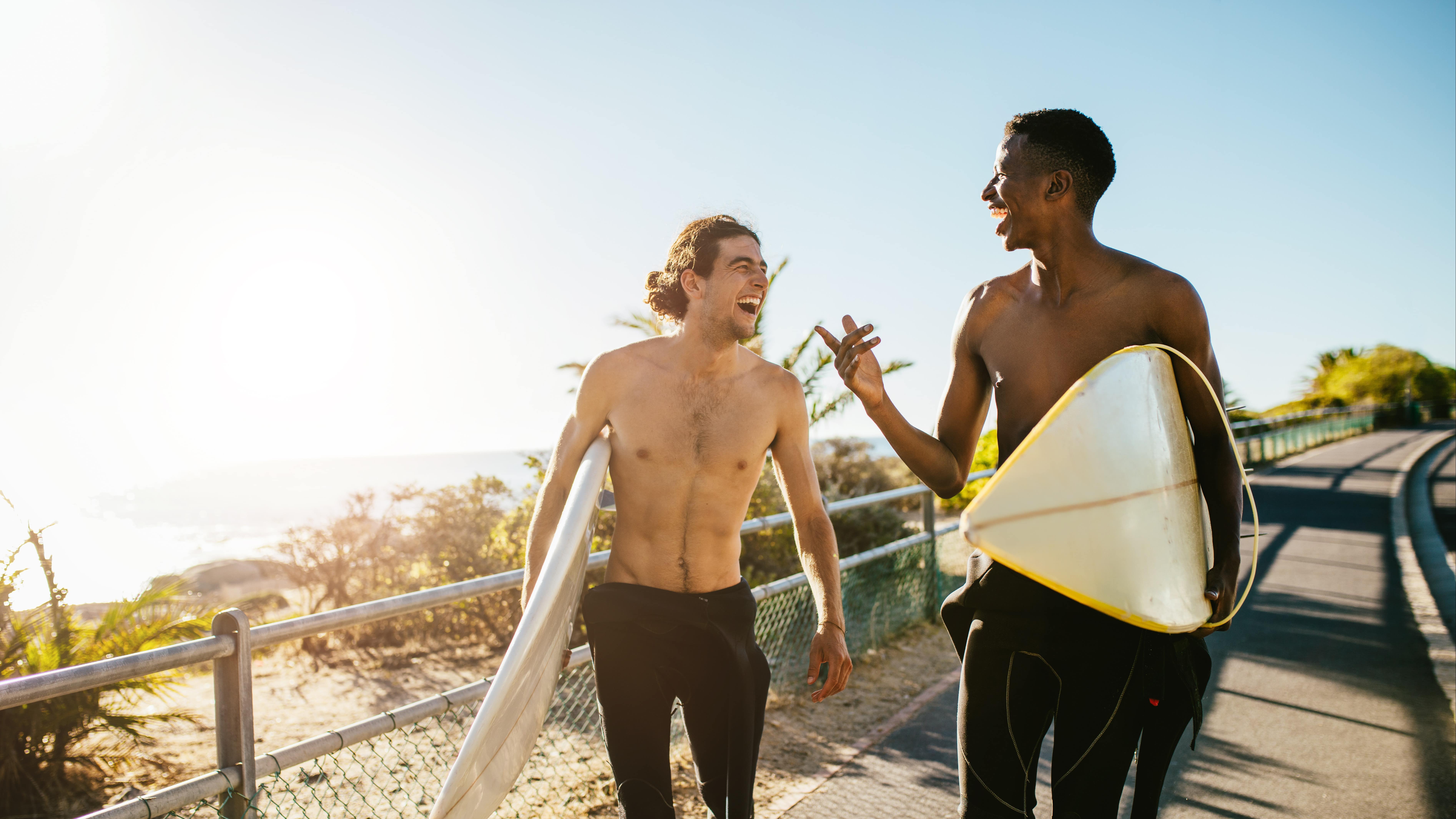Best places to Surf in Victoria
Catch a wave in one of Victoria’s best surf spots all year-round with this comprehensive guide to the state’s most eligible surf beaches.
Black Nose Point, Portland
The rocks at Black Nose Point tends to deter swimmers, making it a great spot for experienced surfers to dominate the waves. The 20-metre high basalt headland forms part of the 400 metre east-facing beach, with a car park at the southern end. A shallow, wide sandbar is exposed at low tide, and waves average about one metre high. Black Nose Point’s low beach break can usually be surfed at low tide, with a long right-hand break famous in surfing circles due to its formation over the reefs at the point. A second point break, known as Rifle Range, occurs along the rocks on the beach’s south side.
Easter Reef, Great Ocean Road
Located along the Great Ocean Road, Easter Reef is for the truly experienced surfers only. Waves here can get massive at times, and even if they look manageable from the shore, it’s truly a different beast once you’re out amongst it. Expect big, strong, powerful waves with a steep jacking take off and plenty of speed to see you soaring down the line toward the shore. Big wave riders will be comfortable here, and many find a boat or jet ski and tow rope are useful for launching. Surfing is best when there’s a northeasterly wind, and locals claim the waves can get up to 20 feet or higher, so safety should be your top priority.
Gibson Steps, Great Ocean Road
Gibson Steps is another hero of the Great Ocean Road. It’s next to the famous 12 Apostles and is one of Victoria’s most beautiful surf spots. Paddle out with the rip and sit back on your board as you take in the views of the area’s spectacular cliffs, before catching one of the beach’s A-frame waves. Again, it’s a beach best suited for experts, as no lifeguards patrol the area. It is, however, a hit with the locals, who love the beach-breaks that come from both directions. The waves are powerful and can have a length of up to 300 metres on a good day, with swells that work well at around 2.5 metres. Get into the water when there’s a northerly or northeasterly wind up.
Bells Beach, Torquay

Bells Beach is often regarded as the home of Australian surfing, and remains the site of our country’s oldest and most professional surf competition. In fact, the winner of the Rip Curl Pro still receives the clanging bell trophy in true Bells Beach tradition. The Southern Ocean swells become slower and steeper over the beach’s shallow reef, resulting in surf that can soar five or more metres above the shoreline. It features a consistent point that breaks with most tides and a decent swell. The long wave consists of three sections, starting at Rincon, moving through Bell’s Bowl and finishing at the beach. The wave is extremely powerful and an outside set can provide unprepared surfers with a bit of an eye opener, but when the surf is small it’s playful and offers plenty of carving potential. The prime time to surf at Bells Beach is when there’s a south west swell and north west winds. If Bells Beach is a little too intimidating for you, try Centreside on the headland to the south, with smaller, less powerful waves providing some respite from the pounding surf at Bells.
Johanna Beach, Great Ocean Road
Near Cape Otway, Johanna Beach offers sensational surf conditions. The waves here are so good it was even the site of the World Surfing Championships in 1970, and surfers the world over come here for the famous left and right breaks. Best reached by car on the loop road off of Great Ocean Road, waves average over 1.5 metres high, with distinct bars and rip channels in the water. This means it’s best to bring a partner and only surf if you have experience. The waves are fast and powerful, with a sandy, rocky bottom to greet you if you do find yourself pummelled by the surf. Swells have been known to get above five metres, with plenty of barrels and peaks to keep wave riders entertained.
Warrnambool Beach, Warrnambool
Less experienced surfers will enjoy the waves by the Warrnambool Surf Club, with beach-break waves flowing in both directions. While the waves don’t usually get very big or powerful, these conditions are perfect for beginners or those looking to try out tricks on more forgiving surf. Wave height usually averages less than half a metre, however this increased to roughly 1.3 metres near the life-saving club and over 1.5 metres at nearby Point Ritchie. There’s a narrow, continuous-wave bar near the breakwater, and a few rips occurring near the surf club. Surfing is best near The Flume, where the waves are consistent and reef and rock in the surf provide a reliable break. There are several breaks along Warrnambool Beach, however, including a reef break called Granny’s near Point Ritchie.
Apollo Bay, Cape Otway
Apollo Bay is a great surf spot for all experience levels, with a point break providing fairly consistent surf. The exposed beach offers exceptional winter surf conditions, with ground swells more frequent than wind swells. Grab a board and head down whenever you feel an offshore wind from the west. There are both left and right-hand waves, and conditions are at their prime at low tide when the water is rising. Some of the more protected beaches at Apollo Bay are perfect for beginners and those wanting to seek shelter from larger, stormy conditions at the main beach.

